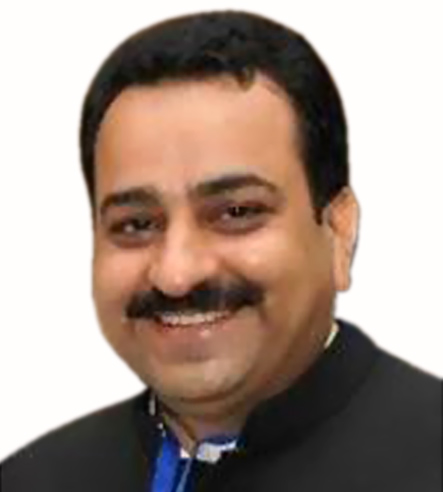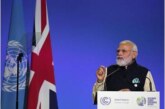
The yawning gap between the rich and the poor in India is a matter of serious concern for the overall sustainable development of India. On the one hand it is a matter of pride that India is home to the fifth largest group of billionaires in the world; concurrently, it is home to a massive number of poor people on the other hand.
According to China-based research firm Hurun’s 2014 global rich list, Mukesh Ambani, chairman of Reliance Industries, is the country’s richest man with a personal fortune of $18 billion, and ranked 41st in the list. Other noted Indians in the list include Lakshmi N Mittal ranked 49th with a personal net worth of $17 billion, Dilip Sanghvi of Sun Pharmaceuticals and Wipro’s Azim Premji both ranked 77th with a personal wealth of $13.5 billion each.
In the global rich list, Gates was followed by Berkshire Hathaway’s Warren Buffett (2nd) with a personal wealth of $64 billion and Amancio Ortega of Inditex was ranked 3rd with $62 billion fortune. The fourth position was claimed by Carlos Slim Helu & family ($ 60 billion) while Oracle’s Larry Ellison with $60 billion was ranked fifth.
Inequality in earnings has doubled in India over the last two decades, making it the worst performer on this count of all emerging economies. The top 10% of wage earners now make 12 times more than the bottom 10%, up from a ratio of six in the 1990s. The Forbes list of billionaires featured 55 Indians in 2013. Strikingly, when the HDI is adjusted for inequality and every second malnourished child in the world is also an Indian.
This scourge of inequality is not confined to individuals alone but haunts some states of the Indian Union as well. As per the Human Development Report (HDR) 2013, India ranked 136th. There are in total 7 states of India which are lagging behind in the race of economic growth namely Bihar, Chhattisgarh, Jharkhand, Madhya Pradesh, Orissa, Rajasthan, and Uttar Pradesh. Individual income inequality measured by the Gini index has also consistently risen, at 39.9 per cent in 2011. The Indian growth-inequality paradox is easy to pin down—the wealth that India creates is not evenly redistributed.
According to available data, a little more than 50 per cent of India’s population continues to be engaged in agriculture (which barely accounts for 14 per cent of GDP), while less than 30 per cent of the population works in the service sector, which accounts for more than 67 per cent of GDP. Inequality in access to education is so glaring, that in HDR 2013, India’s education index loses more than 40 per cent of its value once adjusted for inequality. These have to do with misplaced policy priorities of the government that are only aimed at short-term benefits with an eye towards political gain.
The available data also indicate that spending and consumption by the richest 5% zoomed up by over 60% between 2000 and 2012 in rural areas while the poorest 5% saw an increase of just 30%. In urban areas, the richest segments spending increased by 63% while the poorest saw an increase of 33%. The effect of inflation was removed while making these comparisons. The cause remains to be that the most significant link between growth and poverty reduction is employment generation. Unfortunately, for India, the last decade is widely recognized as a decade of jobless growth, thereby further exacerbating the problem.
The Indian growth-inequality paradox is easy to identify—the wealth that India creates is not evenly redistributed. This lies at the root of India’s rising inequality. Recent research suggests a further characteristic: the polarization of incomes across Indian states into two different clubs of rich states and poor states, with these clubs moving apart from each other. The rich states’ club includes Gujarat, Maharashtra, Punjab and Haryana with the more recent additions of Tamil Nadu and Karnataka. The poor states’ club comprises Orissa, Bihar, Rajasthan, Madhya Pradesh, Uttar Pradesh and some sub-Himalayan states in the east. There has been little variation in the composition of these clubs over time.
However, there’s more to inequality in India. States like West Bengal have experienced mixed fortunes: it was rich in the 1960s, but succumbed to the industrial stagnation of the 1970s and only picked up in the late 1990s. States in the south such as Andhra Pradesh and Kerala have also become richer in the 2000s.
Viewed in a broad perspective, factors like inadequate infrastructure, lack of connectivity, illiteracy and wrong priorities etc., explain the rise in inequality. State infrastructure is found to be a major determinant and infrastructure defined broadly comprises road and railway networks, electrification of towns and villages, power supply to industries, primary- and secondary-level education enrolment, literacy rates and hospitals. The extent of state development expenditure is also found to be strongly associated with determining whether a state is rich or poor.
The Central government should try to pull poor states out of poverty by providing a wider range of fiscal and monetary instruments to such states to enable them to continue and grow. While making such allocations, the Central government should ensure proper monitoring of the utilization of those allocations through an effective regulatory mechanism. The political considerations should not be allowed to come in the way of progress.
The new dispensation that assumes power at the Centre in Post-May 2014 era will be faced with the daunting task of narrowing down this inequality gap so that fruits of sustained development are enjoyed equitably. The new government will have to concentrate on infrastructural investment, proper fiscal management and eradicate corruption and inefficiency by bringing in more accountability.



